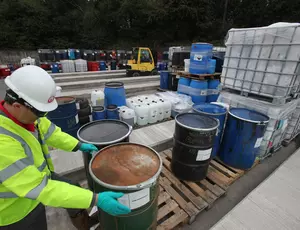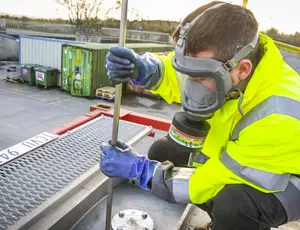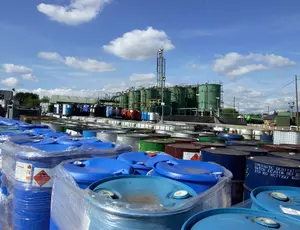Many businesses produce hazardous waste, but do you fully understand what is required when it comes to disposing of these waste streams?
There is often uncertainty over what information is required in order to transport, treat, package, label and more. Read on to find out the facts.
Put your trust in the experts.
Find out more about how Veolia can support your hazardous waste needs.
Myth 1: Dealing with hazardous waste requires unnecessary form-filling
Information on waste composition is required to prove to the authorities that we, as your waste provider, have controls in place to ensure we understand and are permitted to accept the wastes we are receiving. This is critically important in order to ensure we safely transport and manage your waste.
Veolia uses a Classification / Profiling tool to ensure we have all the necessary information. Whilst we can support the profiling process, it is necessary that the producer provides all the necessary information that allows a full classification of the waste, in turn enabling you as the waste producer to fulfil your regulatory duties and Veolia to meet its pre-acceptance obligations.
Myth 2: All hazardous waste needs to be incinerated
Some waste streams, such as isocyanates, need to be incinerated at high temperatures. However, for many types of hazardous waste, there are other treatment options which offer more environmental and financial benefits.
For example, waste oil can be recovered and organic liquids and solvents can be used to create Secondary Liquid Fuel (SLF), which offers a more sustainable alternative to fossil fuels in the cement manufacturing process.
Our team can work with you to identify the most sustainable treatment route for each of your waste streams.
Myth 3: Unknown chemicals can be identified solely by analysis
It is the responsibility of the waste producer to provide information to us, to allow an appraisal of a waste stream.
Analysis is an important tool to reach that goal, and is useful for measuring the concentration of known components, but not necessarily identifying the unknown components of a waste stream.
Using safety data sheets, and an understanding and appreciation of the process which derived the waste, is a much better way of identifying the waste stream.
Myth 4: Waste Management commences after the waste is produced
Early engagement of the waste contractor in the product / process introduction is key to finding the most environmental and commercially sustainable treatment option for your waste.
Leaving the waste management solution at the end of the pipe is too late and can lead to poor segregation and limited options for waste treatment. Waste stream mapping should be a key aspect of new product introductions.
Alternative solutions exist and Veolia has the expertise to work with you on waste stream mapping and gain best value from your waste resource.
Myth 5: I do not need to inform the waste contractor of a change in the composition of the waste stream
A change to the waste composition can impact the waste classification, the dangerous goods classification for ADR / IMDG, the type of packaging required as well as the final treatment options.
Full and accurate profiling is key for safety, environmental and commercial compliance.
Myth 6: As long as my waste is in a container that isn't leaking, it's OK to be collected
The waste must be in a container which meets the required packaging specification for that waste under the ADR regulations. This could be a UN approved container which meets the requirements for that waste materials packing group.
For example, a drum with a vented lid can be used for aerosols which prevents pressurisation from the build up of gases within the drum...
Make sure that you are working with a partner who can support you at every stage of the waste management process.





